Abstract
OBJECTIVE--To investigate the relation between risk of prostatic cancer and occupational exposures, especially to radionuclides, in employees of the United Kingdom Atomic Energy Authority. DESIGN--Case-control study of men with prostatic cancer and matched controls. Information about sociodemographic factors and exposures to radionuclides and other substances was abstracted and classified for each subject from United Kingdom Atomic Energy Authority records without knowledge of who had cancer. SUBJECTS--136 men with prostatic cancer diagnosed between 1946 and 1986 and 404 matched controls, all employees of United Kingdom Atomic Energy Authority. MAIN OUTCOME MEASURES--Documented or possible contamination with specific radionuclides. RESULTS--Risk of prostatic cancer was significantly increased in men who were internally contaminated with or who worked in environments potentially contaminated by tritium, chromium-51, iron-59, cobalt-60, or zinc-65. Internal contamination with at least one of the five radionuclides was detected in 14 men with prostatic cancer (10%) and 12 controls (3%) (relative risk 5.32 (95% confidence interval 1.87 to 17.24). Altogether 28 men with prostatic cancer (21%) and 46 controls (11%) worked in environments potentially contaminated by at least one of the five radionuclides (relative risk 2.36 (1.26 to 4.43)); about two thirds worked at heavy water reactors (19 men with prostatic cancer and 32 controls (relative risk 2.13 (1.00 to 4.52)). Relative risk of prostatic cancer increased with increasing duration of work in places potentially contaminated by these radionuclides and with increasing level of probable contamination. Prostatic cancer was not associated with exposure to plutonium, uranium, cadmium, boron, beryllium, or organic or inorganic chemicals. CONCLUSIONS--Risk of prostatic cancer risk was increased in United Kingdom Atomic Energy Authority workers who were occupationally exposed to tritium, 51Cr, 59Fe, 60Co, or 65Zn. Exposure to these radionuclides was infrequent, and their separate effects could not be evaluated.
Full text
PDF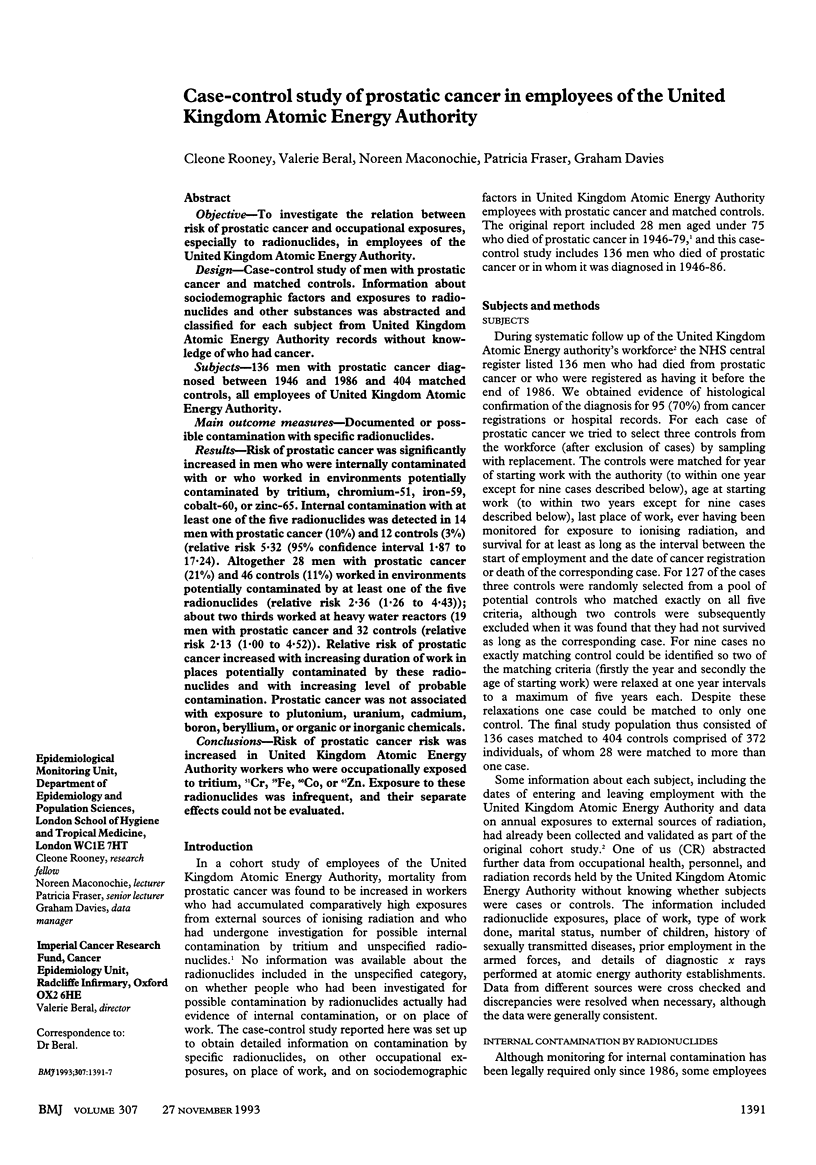
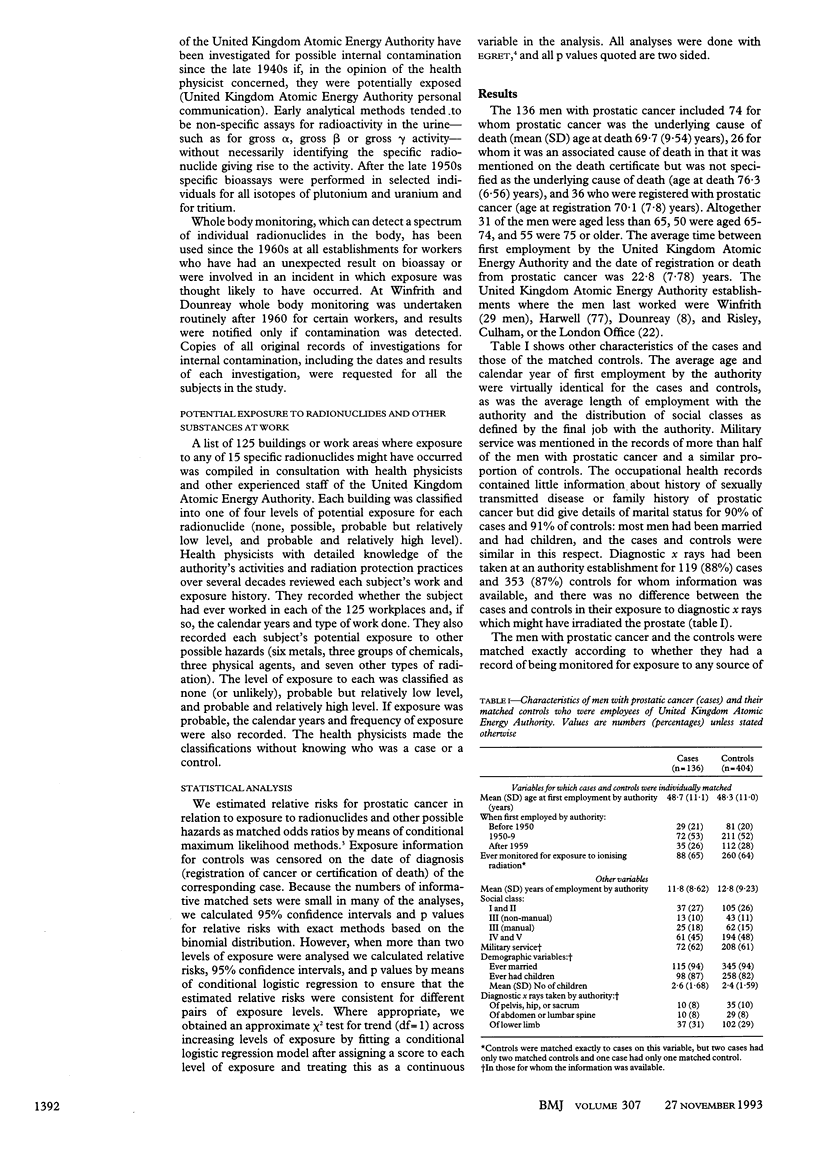
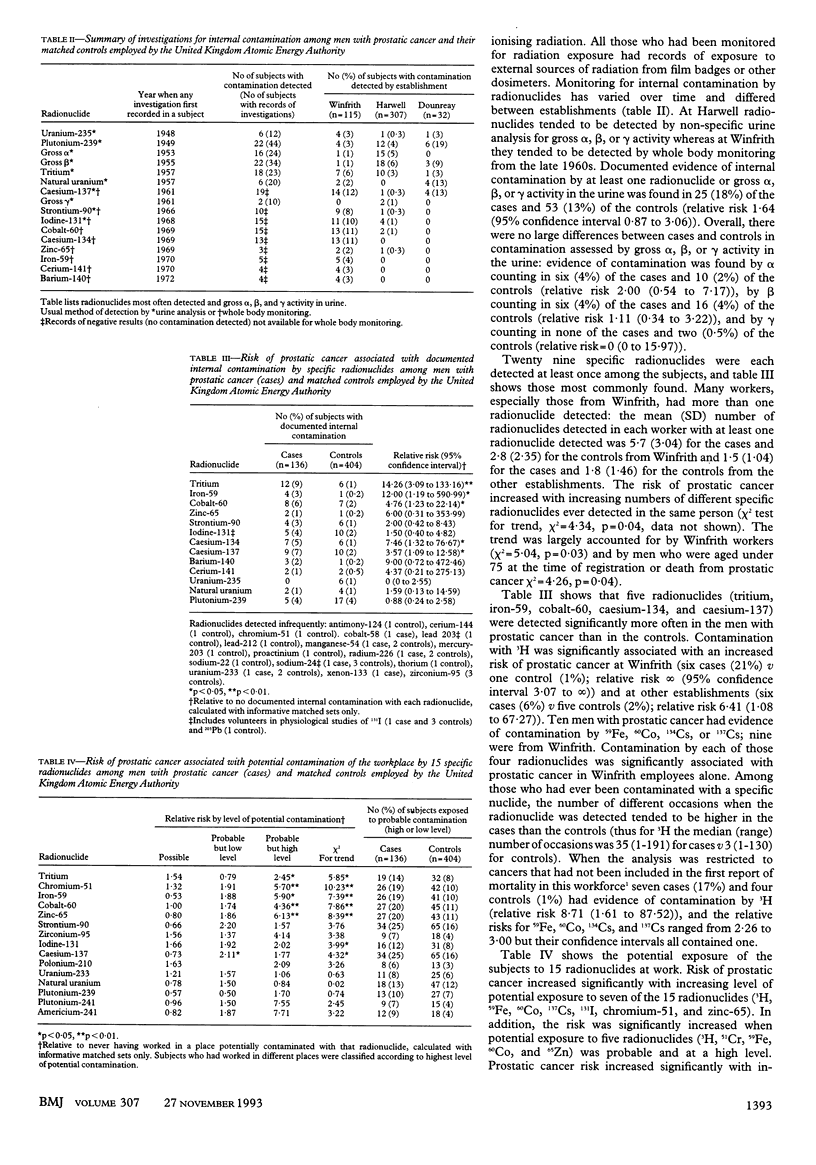

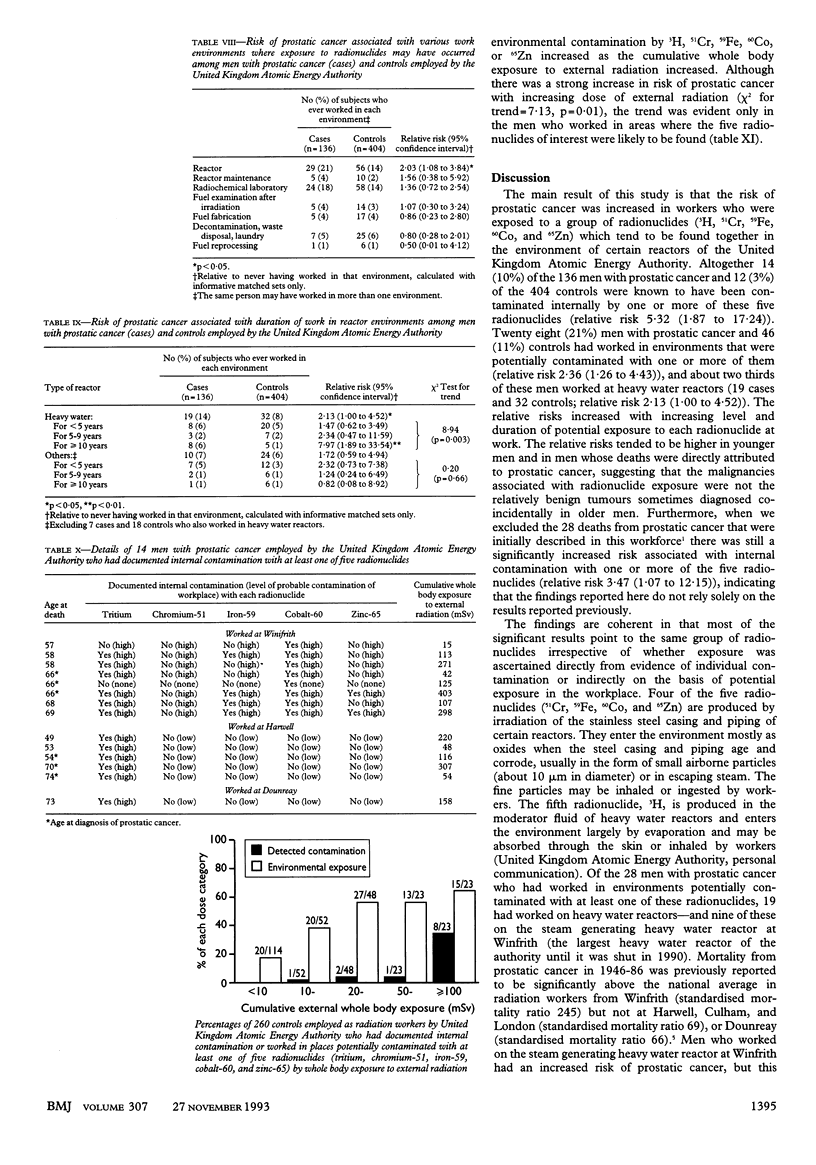
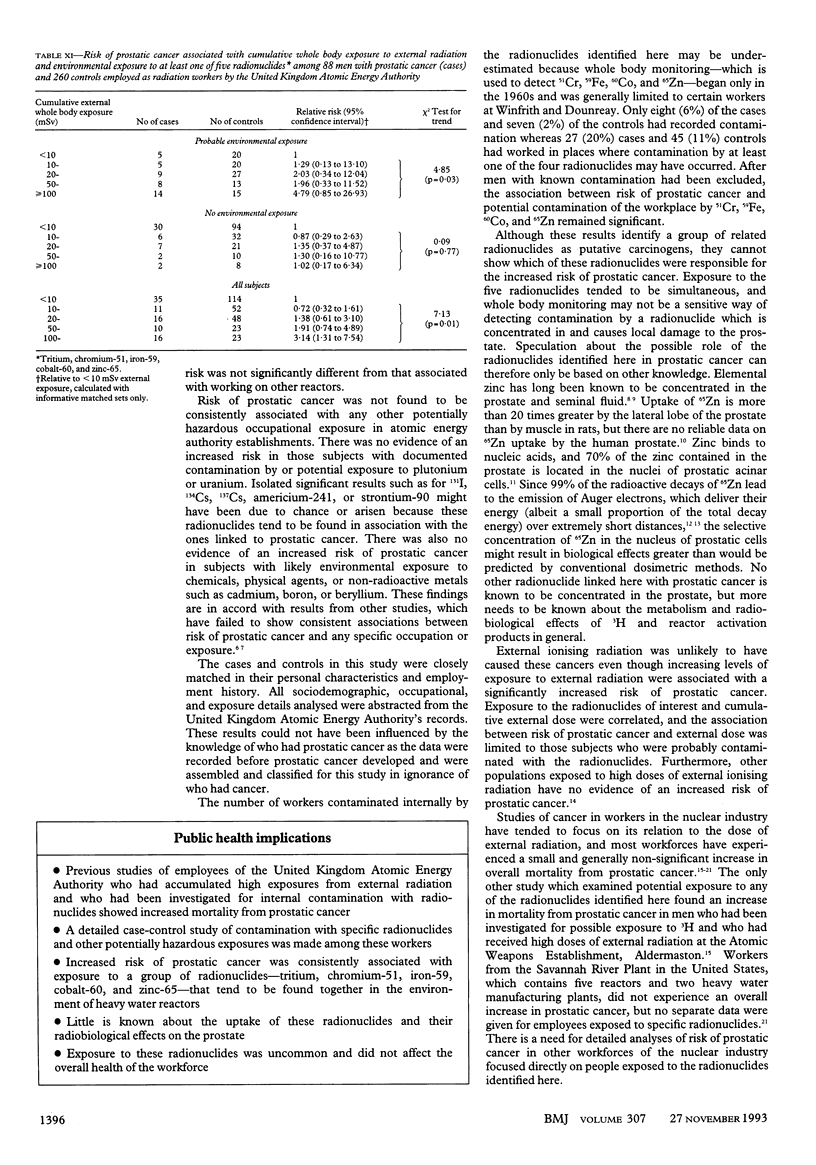
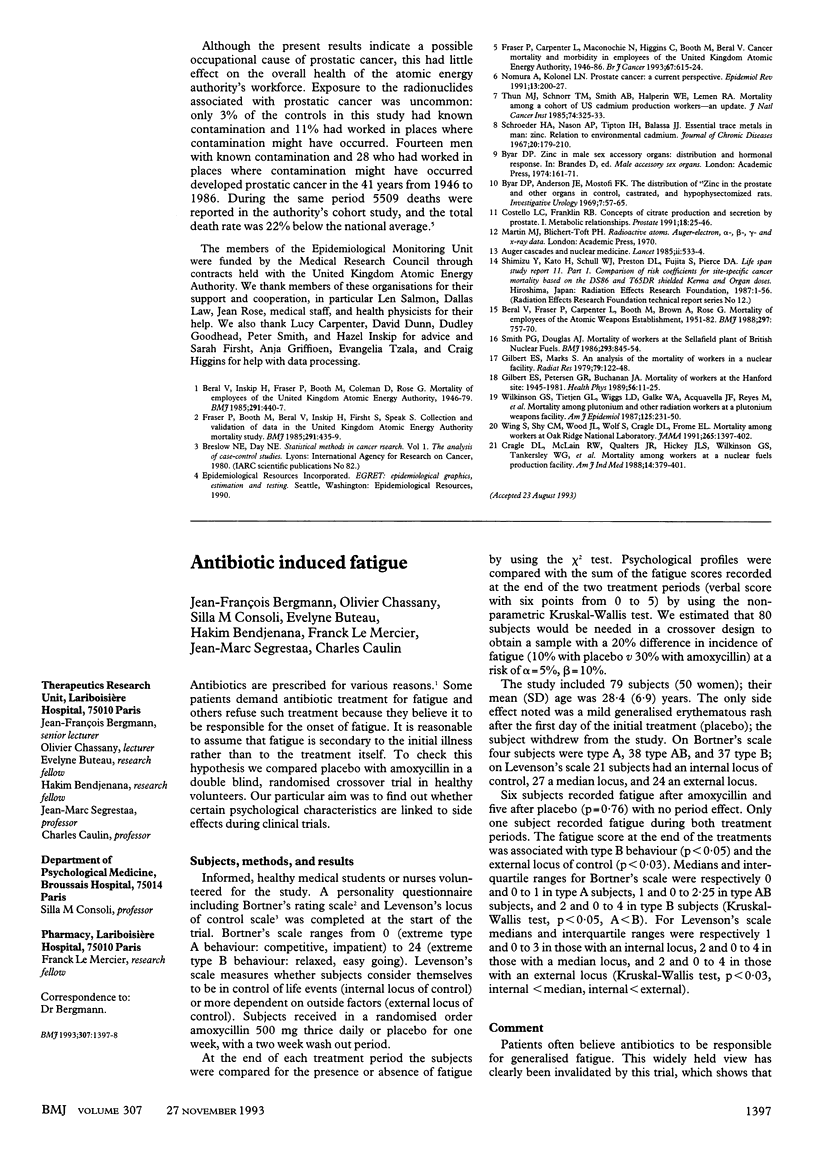
Selected References
These references are in PubMed. This may not be the complete list of references from this article.
- Beral V., Fraser P., Carpenter L., Booth M., Brown A., Rose G. Mortality of employees of the Atomic Weapons Establishment, 1951-82. BMJ. 1988 Sep 24;297(6651):757–770. doi: 10.1136/bmj.297.6651.757. [DOI] [PMC free article] [PubMed] [Google Scholar]
- Beral V., Inskip H., Fraser P., Booth M., Coleman D., Rose G. Mortality of employees of the United Kingdom Atomic Energy Authority, 1946-1979. Br Med J (Clin Res Ed) 1985 Aug 17;291(6493):440–447. doi: 10.1136/bmj.291.6493.440. [DOI] [PMC free article] [PubMed] [Google Scholar]
- Byar D. P., Anderson J. E., Mostofi F. K. The distribution of 65zinc in the prostate and other organs in control, castrated, and hypophysectomized rats. Invest Urol. 1969 Jul;7(1):57–65. [PubMed] [Google Scholar]
- Costello L. C., Franklin R. B. Concepts of citrate production and secretion by prostate. 1. Metabolic relationships. Prostate. 1991;18(1):25–46. doi: 10.1002/pros.2990180104. [DOI] [PubMed] [Google Scholar]
- Cragle D. L., McLain R. W., Qualters J. R., Hickey J. L., Wilkinson G. S., Tankersley W. G., Lushbaugh C. C. Mortality among workers at a nuclear fuels production facility. Am J Ind Med. 1988;14(4):379–401. doi: 10.1002/ajim.4700140404. [DOI] [PubMed] [Google Scholar]
- Fraser P., Booth M., Beral V., Inskip H., Firsht S., Speak S. Collection and validation of data in the United Kingdom Atomic Energy Authority mortality study. Br Med J (Clin Res Ed) 1985 Aug 17;291(6493):435–439. doi: 10.1136/bmj.291.6493.435. [DOI] [PMC free article] [PubMed] [Google Scholar]
- Fraser P., Carpenter L., Maconochie N., Higgins C., Booth M., Beral V. Cancer mortality and morbidity in employees of the United Kingdom Atomic Energy Authority, 1946-86. Br J Cancer. 1993 Mar;67(3):615–624. doi: 10.1038/bjc.1993.113. [DOI] [PMC free article] [PubMed] [Google Scholar]
- Gilbert E. S., Marks S. An analysis of the mortality of workers in a nuclear facility. Radiat Res. 1979 Jul;79(1):122–148. [PubMed] [Google Scholar]
- Gilbert E. S., Petersen G. R., Buchanan J. A. Mortality of workers at the Hanford site: 1945-1981. Health Phys. 1989 Jan;56(1):11–25. doi: 10.1097/00004032-198901000-00001. [DOI] [PubMed] [Google Scholar]
- Nomura A. M., Kolonel L. N. Prostate cancer: a current perspective. Epidemiol Rev. 1991;13:200–227. doi: 10.1093/oxfordjournals.epirev.a036069. [DOI] [PubMed] [Google Scholar]
- Schroeder H. A., Nason A. P., Tipton I. H., Balassa J. J. Essential trace metals in man: zinc. Relation to environmental cadmium. J Chronic Dis. 1967 Apr;20(4):179–210. doi: 10.1016/0021-9681(67)90002-1. [DOI] [PubMed] [Google Scholar]
- Smith P. G., Douglas A. J. Mortality of workers at the Sellafield plant of British Nuclear Fuels. Br Med J (Clin Res Ed) 1986 Oct 4;293(6551):845–854. doi: 10.1136/bmj.293.6551.845. [DOI] [PMC free article] [PubMed] [Google Scholar]
- Thun M. J., Schnorr T. M., Smith A. B., Halperin W. E., Lemen R. A. Mortality among a cohort of U.S. cadmium production workers--an update. J Natl Cancer Inst. 1985 Feb;74(2):325–333. [PubMed] [Google Scholar]
- Wilkinson G. S., Tietjen G. L., Wiggs L. D., Galke W. A., Acquavella J. F., Reyes M., Voelz G. L., Waxweiler R. J. Mortality among plutonium and other radiation workers at a plutonium weapons facility. Am J Epidemiol. 1987 Feb;125(2):231–250. doi: 10.1093/oxfordjournals.aje.a114523. [DOI] [PubMed] [Google Scholar]
- Wing S., Shy C. M., Wood J. L., Wolf S., Cragle D. L., Frome E. L. Mortality among workers at Oak Ridge National Laboratory. Evidence of radiation effects in follow-up through 1984. JAMA. 1991 Mar 20;265(11):1397–1402. [PubMed] [Google Scholar]


